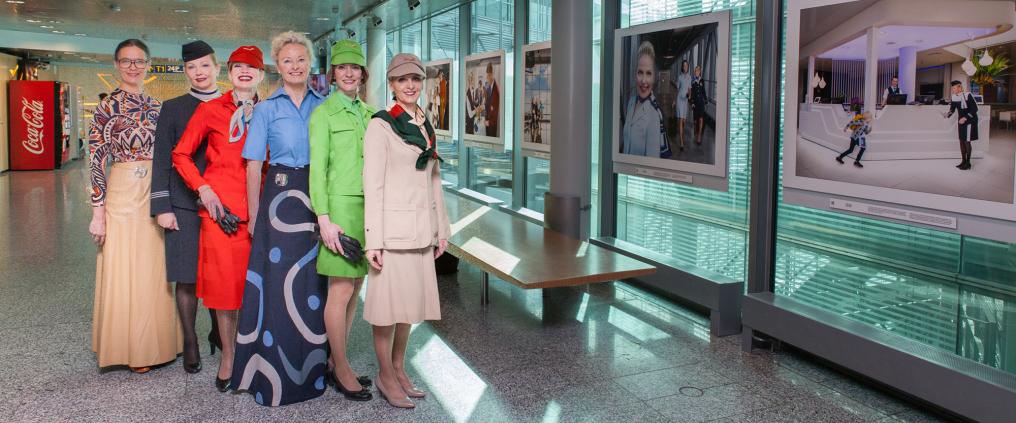Finnair came up with an idea to stand out from the competition: Finn Hostesses offered a unique service during the flight and in so doing promoted this little northern country around the world.
The interiors of aeroplanes used for long-haul flights were designed by the top names of the time: Marjatta Metsovaara, Tapio Wirkkala, and Dora Jung.
Wirkkala's Ultima Thule tumblers were first introduced on Finnair aeroplanes, and only available in shops a few years later. Finnair still uses them.
Top-class service
And what about the actual service then?! It was provided by carefully selected and well-trained Finn Hostesses who soon became famous. Only applicants with at least five years of flight attendant experience were allowed to apply.
The demanding training programme comprised Finnish culture, business life, and tourist attractions, including an opera festival visit. Extensive knowledge of food and drinks was another essential element of training. Finn Hostesses had a front-line role that required them to spend time with passengers, take good care of them, and know a lot.
The first-class bar of transatlantic DC-8 aeroplanes was their kingdom, where they served drinks such as FH cocktails and even played card games with passengers.
This elegant group of hostesses caught the attention of media around the world and were invited to appear on American morning TV shows, for example.
Something new, something old
The outfits worn by Finn Hostesses were something else altogether. They were renewed yearly but always included long dresses, and the best-known Finnish designers would compete for the opportunity to design them.
The hostesses only donned the outfits after they got on the aeroplane, and their entrée on the first-class aisle was always striking. People talked about the outfits and expected to see something remarkable.
The first Finn Hostesses wore a graphic blue-white velour dress by Suomen Trikoo, and the long, beige leather skirts by Friitala became a favourite with many. The padded skirt in the photo was given the nickname “tea cosy”.
The role of Finn Hostesses as the face of Finnish fashion design was significant. The mother of the concept, Head Hostess Anja-Brita Huttunen, was even granted an exports award.
The hostesses complemented every outfit with Björn Weckström's avant-garde silver brooch. The idea for the ”People need People” brooch came from the hostesses: it represents a person's longing for another person, even in the modern space era.
By the 1980s, the concept of Finn Hostesses had become outdated and the passengers of the new business class were served by Service Chefs. However, Finn Hostesses will always have their own place in the history of Finnish aviation.
If you want to know more about flight attendant uniforms, visit the Blue Wings of Time photographic exhibition.
Photos: Visuaaliviestinnän Instituutti VVI Oy



